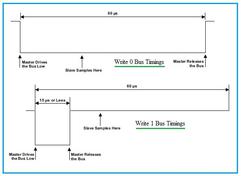MikroBUS: Advantages, Disadvantages, and Pinout
Advertisement
This page covers the advantages and disadvantages of the MikroBUS interface and its pin out. It will detail the benefits and drawbacks of MikroBUS.
What is MikroBUS?
Introduction:
PCB design manufacturers around the world develop products with different pin outs and use different options for external connectivity. This can make it difficult to interface two boards from different manufacturers. The MikroBUS standard was developed to address this issue, providing a plug-and-play pin out standard.
The MikroBUS specification defines a specific connector with standard spacing. This connector includes two 1x8 headers. Figure 1 below depicts the MikroBUS pin out with all the details.

Each MikroBUS provides an interface for three serial communication channels: SPI, UART, and I2C. The SPI interface is on the left side, and the UART/I2C interfaces are on the right side.
The following table details the pin assignments, which are also illustrated in Figure 1.
Left side MikroBUS Pin out (Top to Bottom)
| Pin No | Designation | Description |
|---|---|---|
| 1 | AN | Analog Pin |
| 2 | RST | Reset pin |
| 3 | CS | SPI Chip Select |
| 4 | SCK | SPI Clock |
| 5 | MISO | SPI Slave Out |
| 6 | MOSI | SPI Master Out |
| 7 | +3.3V | 3.3V Power |
| 8 | GND | Ground |
Right side MikroBUS Pin out (Top to Bottom)
| Pin No | Designation | Description |
|---|---|---|
| 1 | PWM | PWM Output |
| 2 | INT | Interrupt |
| 3 | Rx | UART Receive pin |
| 4 | Tx | UART Transmit pin |
| 5 | SCL | I2C clock |
| 6 | SDA | I2C data |
| 7 | +5V | 5V power |
| 8 | GND | Ground |
Figure 2 depicts a PCB with a MikroBUS connector. The mikroBUS socket uses a pair of 1x8 female headers on all the boards. As mentioned, it consists of three serial communication pins, six additional pins (PWM, interrupt, analog input, reset, and chip select), and two power groups (3.3V and 5V).

The mikroBUS socket on a PCB helps in the integration of various clock boards, transceivers, sensors, LED displays, and audio amplifiers from various manufacturers.
Companies that use the mikroBUS interface include Microchip, NXP, Infineon, Renesas, Synopsys, AVNET, Analog Devices, Cypress, Farnell, Fujitsu, PHYTEC, and Silicon Labs.
Benefits or Advantages of MikroBUS
The following are the benefits or advantages of MikroBUS:
- It helps in easy addition of extra boards using standard mikroBUS sockets.
- It helps to integrate additional functionality to a mikroBUS based board without any hardware adjustments.
- It is a single bus which offers connections for three different types of serial communication devices.
- It allows integration of numerous click boards which are plug and play type without any hassles. Hence, customers will have wide options to enhance functionality at any time due to the availability of hundreds of boards with mikroBUS.
- It does not require much time due to no soldering and no wires.
Drawbacks or Disadvantages of MikroBUS
The following are the limitations or drawbacks or disadvantages of MikroBUS:
- It introduces too many features which increases cost while designing small IoT hardware.
- It does not have a GPIO interface. Hence, it is not suitable for board design which requires GPIOs in comparison to other modular systems such as R-Bus, M2.COM, Micro bit, PMOD, Grove system, and Arduino Shield.
Advertisement
 RF
RF



